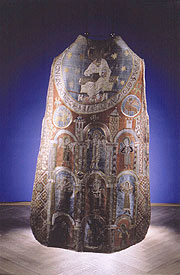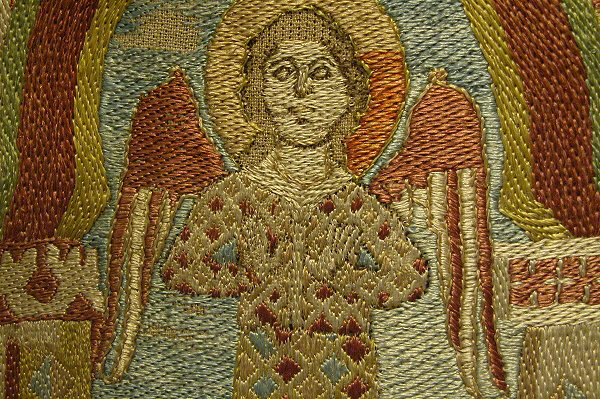| The Göss Benedictine
nunnery was founded in 1010 by Count Aribo II and his wife Adala.
Their daughter, Kunigunde became Abbess of the nunnery.
One of the most famous examples of their work is the collection
known as the "Gösser Vestments" from the 13th Century, which are
now one of the prime exhibits at the
Museum für Angewandte Kunst (Museum of Applied Arts) in
Vienna.
Kunigunde (abbess between 1239-1269), donated
these so-called Göss Vestments in 1260. She, along with the
other nuns, had made the garments herself. Vestments represent
an ensemble of stylistically matching liturgical garments, for
the priest, deacon and sub-deacon, supplemented by a festive
altar cloth. The Göss vestments consist of embroidered linen and
are in uniquely good condition as they were rarely used, except
for the mass held to mark the anniversary of the death of the
nunnery's founder Adala.
Dating and attribution of the vestments is
possible by a number of inscriptions in the vestments.
Unusually, the inscription is in Middle High German rather than
Latin.
Silk embroidery upon a linen ground.
The site of the nunnery is now a brewery! |


